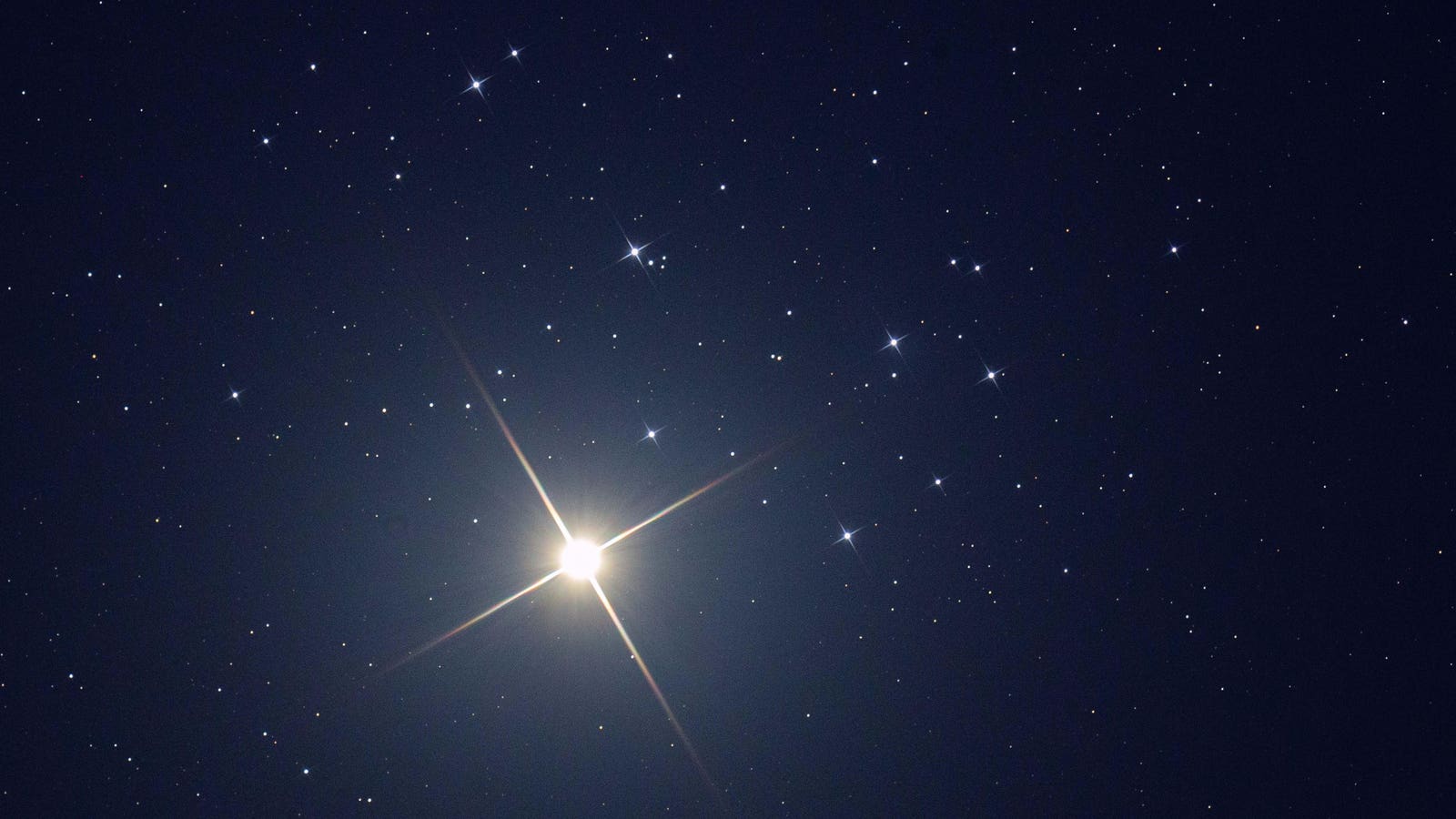Venus and the Pleiades as seen from Beijing, China, on April 3, 2020 (Costfoto/Barcroft Media via … More
Early risers on Saturday, July 5, are in for a pre-dawn treat — Venus shining brightly as the “Morning Star” close to the glittering Pleiades star cluster. Two of the most stunning sights in naked-eye astronomy will shine together just before sunrise. Here’s everything you need to know about when and where to see them.
Where And When To Look
To see the duo, head outside about an hour before sunrise and look east. Venus, shining brightly at magnitude -4.1, will be unmistakable even in the growing twilight. Venus will be just beneath the Pleiades (also known as the Seven Sisters and Messier 45), one of the closest open clusters of stars to the solar system. It’s about 444 light-years from the solar system.
What You’ll See
Look below-left of Venus — directly beneath the Pleiades — and you may be able to make out a V-shape of stars centered on one bright reddish star. The star is Aldebaran, a red supergiant star and the brightest in the constellation Tauris, the bull. Its name means “the follower” because it appears to follow the Pleiades through the night sky. It’s also known as the “eye of the bull.”
Both the Pleiades and Aldebaran are typically thought of as winter objects. They’re currently making a brief pre-dawn appearance and will soon be lost in the daytime sky until fall.
Between Venus and the Pleiades will be the planet Uranus, though it’s far too dim to be seen without a telescope.
Saturday, July 5: Venus And The Pleiades
Observing Tips
Most people immediately think of a telescope when they think about astronomy. It’s not necessary for this event. You’ll see much more just by using your naked eyes. However, a pair of binoculars is always useful when stargazing, allowing you to zoom in on the Pleiades, not only to see more of its over 1,000 stars but also the incredible nebulosity between the stars. That light is a passing molecular cloud of gas and dust being lit up by the stars of the Pleiades.
Choose an observing location with a clear, unobstructed view to the eastern horizon, if possible, away from city lights — though light pollution makes zero difference when observing planets.
Pleiades open star cluster with nebula (Messier 45) in constellation of Taurus photographed with … More
What’s Next In The Night Sky
Look to the southern sky from about 45 minutes after sunset on Sunday, July 6, and you’ll see a bright waxing gibbous moon shining close to the famous summer constellation Scorpius, the scorpion. Return 24 hours later, and it will be closer to Antares, the brightest star in Scorpius.
For exact timings, use a sunrise and sunset calculator for where you are, Stellarium Web for a sky chart and Night Sky Tonight: Visible Planets at Your Location for positions and rise/set times for planets.
Wishing you clear skies and wide eyes.









